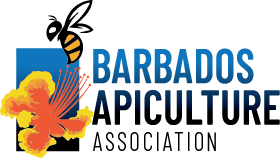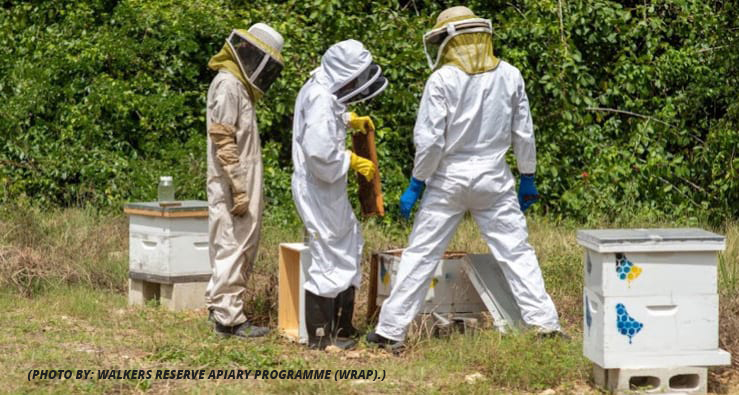Beekeeping Equipment
Protective Equipment: In case you hadn’t realized, Bees Sting!! The reactions to these stings can vary, depending on the susceptibility of each individual to bee venom. It is, therefore, important that you wear personal protective equipment, from head to toe, when beekeeping. In Barbados, it is most common for beekeepers to wear full suits, with the veil being the most important. Gloves are also worn by many beekeepers, even though they impact mobility and are, therefore, eschewed by some. Always smoke your hands, with or without gloves, prior to opening a hive. Bees are attracted to dark crevices, and so, wearing light-colored clothing will help.
Standard Hive Bar Tool: Common design is a flat, sharp blade on one end – like a putty knife, except much stronger. This part of the tool is used for prying apart hive bodies, loosening covers, scraping propolis or wax off of hive parts, among many other potential uses. The standard design has a curve at one end with a slot in it for pulling and prying out nails.
Bee Brush: A bee brush comes in handy when you are conducting an inspection or harvest whose process is impeded by the bees themselves. A bee brush is a brush with relatively long, soft hair that is used to gently sweep the bees away, so that they avoid being harmed or killed during hive management. While useful, bee brushes are not considered critical to the running of the apiary. ·
Uncapping Fork: An uncapping fork is used to remove (scrape-off) the wax coating that encases honey in the comb. After the wax is removed, the frames are put in a honey extractor that spins out the honey. Do you know the difference between capped honey and capped brood? Check the colour! Capped honey is a pale yellow, whitish colour while capped brood is brown.
Smoker: A smoker is the most important tool needed. Bees communicate with odor or pheromones. Smoking the bees masks these pheromones. The smoke also calms the bees, allowing the beekeeper enough time to open and manage the hive.
Smoker Fuel: When selecting fuel for your smoker, you must be careful not to use material that produces smoke that is offensive to the bees. In addition, you should choose material that effectively retains heat and wouldn’t require regular recharging. In Barbados, there are many options for smoker fuel, but the ones preferred by beekeepers include: trumpet leaf; coconut and other palm husks; “beard” from the Bearded Fig Tree; dry grass; and cardboard. Some use newspaper to start the smoker, but others prefer only all natural materials. Dried animal dung may also be used. Do not use plastic or products from plants from the poison ivy family, including mango. These are toxic to bees when burned.
There are other bits of equipment, such as clamps, to hold frames during inspection, heating knives to uncap honey, honey extractors (manual and electronic) which range from 2 frame– over 100 frame capacity. However, these are the most critical bits of equipment you will need to when seriously considering beekeeping as a career.
(Adapted from ‘ Barbados Beekeeping Guide’ IICA, Barbados Delegation, 2020.)


Recent Comments